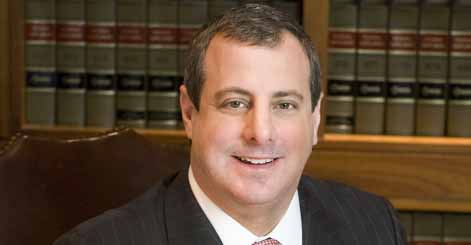Lawyer Limelight: Stephen J. Herman
By Xenia Kobylarz | May 28, 2012 | Lawyer Limelights

Photo provided by Herman, Herman, Katz & Cotlar
Asked whether he considers the $7.8 billion settlement he helped obtain as co-lead counsel in the 2010 BP Gulf of Mexico class action a defining moment in his legal career, Stephen J. Herman hesitates. “It’s certainly the largest case where I’ve played a primary role,” says the 43-year-old partner at Herman, Herman, Katz & Cotlar in New Orleans. “[But] the Scott v. American Tobacco case is certainly the greatest accomplishment that I have been associated with. I was one of many, but I played a significant role.”
The Scott case is considered a seminal case for tobacco class-action litigation. The case was first filed by Herman’s father, the legendary Russ M. Herman, in 1996 when Steve Herman was in law school, working as a paralegal at the historic firm founded by his grandfather. The case concluded in 2011 with a U.S. Supreme Court ruling affirming the $240 million award against major tobacco companies to cover the cost of helping qualified smokers in Louisiana quit smoking. “It took us a total of about three years to try, 18 months to pick a jury; it’s one of the few class action cases against tobacco to go to trial, and it’s the only class action verdict that has withstood appeal all the way to the U.S. Supreme Court,” Herman says. The case not only defined his career path, but it also became a chapter in a book he wrote while in law school published in 1998, “America and the Law: Challenges for the 21st Century.”
“The BP oil spill case really presents a very broad challenge because you’re dealing with a very broad number of people across a fairly significant geography, and it’s an intersection of a lot of different laws. So it’s challenging for all those reasons,” Herman concedes. Still, he believes, it was the tobacco litigation and past high-profile cases such as the Chinese drywall litigation, the Schultz v. Texaco case, and the Marchesani v. Pellerin-Milnor Fifth Circuit decision that really solidified his career as a plaintiffs lawyer.
“I was lucky enough to be involved in a number of high-profile and complex cases and all of that experience prepared me to deal with the things that I had to deal with in the BP oil case,” he says. “All that experience put together was all the preparation I needed for this case.”
Lawdragon: It might still be too soon, but so far, how has the BP oil spill case affected your practice and your personal life, or has it?
Stephen J. Herman: It has been all-consuming. As my wife and kids will attest, I have never really had a “day off” since early May 2010. Even when not physically doing work, I am always pre-occupied with issues, forming to-do lists in my head, drafting would-be filings, or responding to e-mail, (which I check constantly).
LD: Anything interesting in the case that you can share that is not known to the public yet and hasn’t been written about?
SH: I’m not sure if it is really a “secret,” but the framing of BP’s failure to maintain source control as a separate quantification of fault was, in my opinion, critical to shifting the focus from errors on the rig in the heat of the moment to systemic failures by management.
LD: It must have been a frenzied two years for you and it’s not over yet. Still, after you reached the settlement, what was the first thing you did that you couldn’t do while you were immersed in this case?
SH: I cleaned up my yard, in anticipation of a party that my wife and I threw the next weekend for all of the attorneys and staff who had been working so hard preparing for trial.
LD: Like many other massive plaintiffs cases, there was an intense battle to win the lead-counsel seat in this case. How do you think you earned your spot on this one?
SH: I'm not sure, exactly. I think the Court likely recognized that Jim Roy and I would work well together, and there was a fairly broad consensus among the lawyers involved for Jim and I to serve as co-liaison counsel fairly early on. After the Multidistrict Litigation (MDL) Panel transferred the case to New Orleans, we were fortunate enough to have an all-star Plaintiffs Steering Committee appointed, as well as the cooperation of almost 100 additional firms contributing to the common benefit effort.
LD: What do you consider the most challenging aspect of being a plaintiffs attorney?
SH: Trying to keep your head up, take the long view, and not get sucked into a battle over something that’s not worth fighting about.
LD: How did you end up in this area of law?
SH: When I finished clerking for [former Louisiana Supreme Court] Justice [Harry T.] Lemmon, the firm was involved in a number of class actions. I worked on those, with some success, and then began teaching complex litigation at both Tulane and Loyola. Because of our experience in Propulsid, Vioxx and Chinese Drywall, our firm had demonstrated an ability to manage these larger multi-district cases.
LD: Do you have a hobby or something you do for fun outside of work?
SH: I used to write a lot, but now I am mostly reduced to e-mails and briefs.

